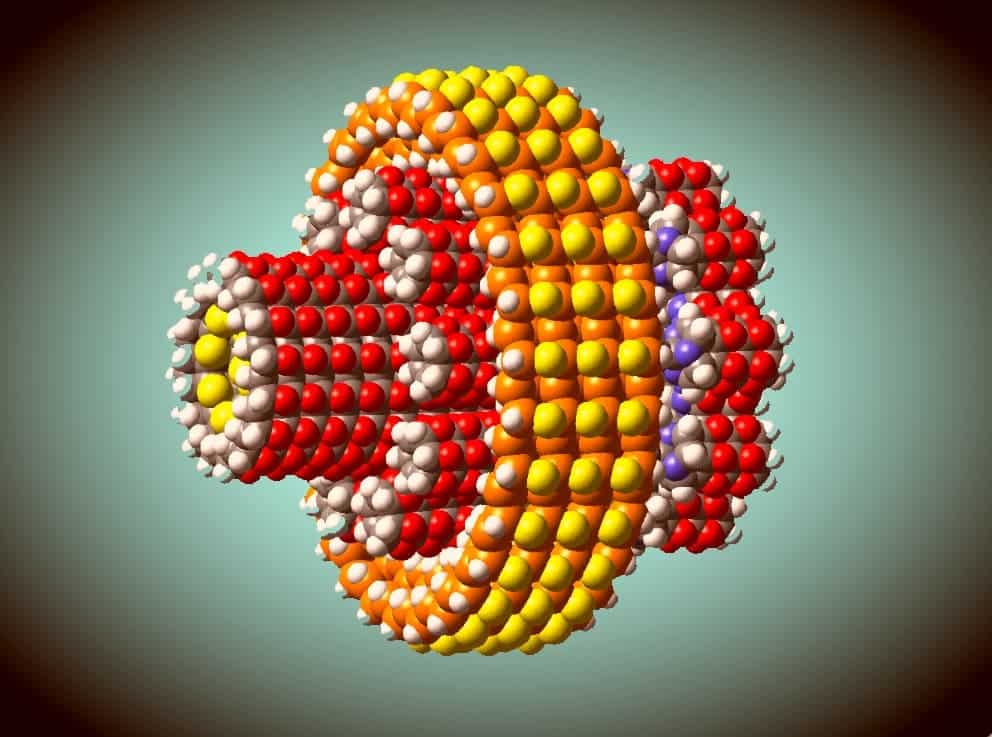Nanobots have the potential of revolutionizing fields from material engineering to medicine. But first, we have to figure out how to build them and make them work. A new paper reports on a confident step toward that goal, as we’ve been able to observe the collective behavior of autonomous nanobots inside a living host.

The range of tasks that nanobots can potentially handle is, in theory, incredible. Needless to say, then, there’s a lot of interest in making such machines a reality. For now, however, they’re still in the research and development phase, with a particular interest in tailoring them for biomedical applications. Nanobots using our body’s own enzymes as fuel are some of the most promising systems in this regard currently, and a new paper is reporting on how they behave inside a living host.
March of the Machines
“The fact of having been able to see how nanorobots move together, like a swarm, and of following them within a living organism, is important, since millions of them are needed to treat specific pathologies such as, for example, cancer tumors,” says Samuel Sánchez, principal investigator at the Institute for Bioengineering of Catalonia (IBEC).
Nanobots are machines built at the nano-scale, where things are measured in millionths of a millimeter. They’re intended to be able to move and perform certain tasks by themselves, usually in groups. Being so small, however, actually seeing them go about their business — and thus, checking if they work as intended — isn’t very easy.
That’s why the IBEC team, together with members from the Radiochemistry & Nuclear Imaging Lab at the Center of Cooperative Investigation of Biomaterials (CIC biomaGUNE) in Spain, set out to observe these bots working inside the bladders of living mice using radioactive isotope labeling. This is the first time researchers have successfully tracked nanobots in vivo using Positron Emission Tomography (PET).
For the study, the team started with in vitro (in the lab) experiments, where they monitored the robots using both optical microscopy and PET. Both techniques allowed them to see how these nanoparticles interacted with different fluids and how they were able to collectively migrate following complex paths.
The next step involved injecting these bots into the bloodstream and, finally, the bladders of living mice. The machines were designed to be coated in urease, an enzyme that allows the bots to use urea from urine as fuel. The team reports that they were able to swim collectively, which induced currents in the fluid inside the animals’ bladders. These nanomachines were evenly distributed throughout the bladders, the team adds, which is indicative of the fact that they were coordinating as a group.
“Nanorobots show collective movements similar to those found in nature, such as birds flying in flocks, or the orderly patterns that schools of fish follow,” explains Samuel Sánchez, ICREA Research Professor at IBEC.
“We have seen that nanorobots that have urease on the surface move much faster than those that do not. It is, therefore, a proof of concept of the initial theory that nanorobots will be able to better reach a tumor and penetrate it,” says Jordi Llop, principal investigator at CIC biomaGUNE.
The findings showcase how nanomachines can come together and coordinate as a group, even one with millions of members, both in the lab and in living organisms. It might not sound like much, but checking that these machines can really interact as we want them to is a very important milestone in their development. It also goes a long way to prove that their activity can be monitored, even in living organisms, meaning that they can eventually be used to treat human patients.
“This is the first time that we are able to directly visualize the active diffusion of biocompatible nanorobots within biological fluids in vivo. The possibility to monitor their activity within the body and the fact that they display a more homogeneous distribution could revolutionize the way we understand nanoparticle-based drug delivery and diagnostic approaches,” says Tania Patiño, co-corresponding author of the paper.
One of the uses the team already envisions for similar nanobots is that of delivering drugs in tissues or organs where their diffusion would be hampered, either by a viscous substance (such as in the eye) or by poor vascularization (such as in the joints).
The paper “Swarming behavior and in vivo monitoring of enzymatic nanomotors within the bladder,” has been published in the journal Science Robotic.






